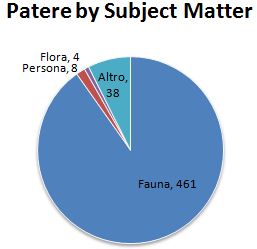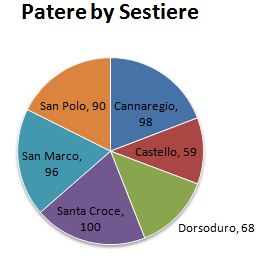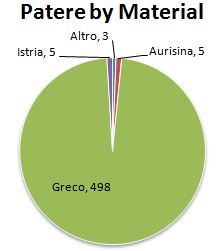Patere
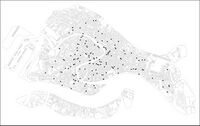 | |
| Total Number | 482 |
|---|---|
| Total Number Missing | 4 |
| Purpose | Decorative |
Products of Byzantine culture, patere are small, circular reliefs that dot the sides of buildings throughout Venice and are a sub-set of material culture. Their shape originates from the way they were made, often sculpted from slices of old marble columns that had been replaced in past renovations of a building. Patere constitute the oldest type of Venetian public art, with flat patere being the oldest of the category. Formelle, a related type of public art, are also considered part of the patere collection because they share many of the same graphical motifs. Formelle are often larger than patere, and are characterized by a rectangular shape capped with a rounded arch, rather than being circular.
Statistics
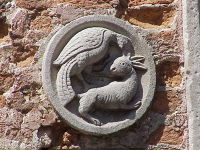
- Patere are a sub-category of reliefs.
- Patere are usually 20 to 80 centimeters in diameter
- Patere exist in six categories: flat, low/medium relief, high relief, curved, champlevé, and drilled.
- Extrememly fashionable in the 12th to 14th centuries, they were thought to protect a household from vice or evil.
- The motifs are widely varied with about 150 images accounting for the majority of the designs.
- The most popular image consists of an eagle eating the head of a rabbit, symbolizing the victory of virtue over vice.
- Home to 482 patere, Venice contains over one third of the worlds 1200 known patere.
- The oldest patera is located in San Marco and dates from 1000 AD.
- The most recent patera is located in Dorsoduro and dates from 1400 AD.
- The patera in the most need of restoration is located in San Marco and dates from 1150 AD.
Damage and Preservation
For general information pertaining to the sources of damage to Venetian patere, please see the Damage to public art page.
For general information pertaining to the restoration and preservation of Venetian patere, please see the Restoration and preservation of public art page.
Specific information regarding the damage and restoration needs of each patera can be found on the pages dedicated to each individual patera, as listed in the map below and in the navigation box under the "See Also" section of this page.
Location
{{#compound_query: |Patere;?Coordinates;?PV ID;icon=Red Marker.png |Coordinates::+;?Coordinates;?PV ID;icon=Blue Marker.png |limit=500 |height=500px |format=map }}
See Also
| ||||||||
References
- Rizzi, Alberto. "Scultura Esterna a Venezia." Stamperia di Venezia Editrice, 1987.
- Venice Project Center
Bibliography
- 2010 WPI PreserVenice Project Team
- 2008 WPI PreserVenice Project Team
- 2007 WPI PreserVenice Project Team
- 2000 WPI PreserVenice Project Team
